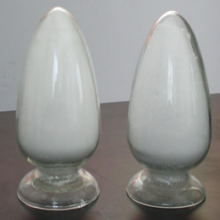A study on Aglepristone
Aglepristone's action mechanism in the placentation of female dogs is still not clear. Recently, some researchers did research on description of the mechanism when aglepristone influences ovary and uterus and the measurement for the levels of steroid sex hormones in female dogs that is not pregnant.
Aglepristone's action mechanism in the placentation of female dogs is still not clear. Recently, some researchers did research on the description of the mechanism when aglepristone influences ovary and uterus and the measurement for the levels of steroid sex hormones in female dogs that is not pregnant.

Introduction of Aglepristone
Aglepristone is a progesterone receptor antagonist used to terminate pregnancy from early to late luteal phase of the ovarian period. Nevertheless, the specific physiologic outcome of blocking of nuclear PR in uterus and ovary is still not clear. Histological findings after the use of RU534 after placentation (between 25th and 45th day of pregnancy) revealed the accumulation of secretions in glandular chambers and retrograde affection in the tissue. In addition, endometrium was obviously thicker than that in pregnant, untreated femal dogs.
Aglepristone given between the 25th and 45th day of the luteal phase is not likely to influence PR and α-estrogen receptor (ERα) density in uterus. However, there is no intelligence available to the authors about those parameters in the placentation period–the 19th to 21st day after the luteinizing hormone (LH) peak. This is a period of various kinds of notable changes in the reproductive system of both pregnant and non-pregnant female dogs. In the meantime, structure of uterine wall is thoroughly recombined mainly influenced by progesterone (P4). In pregnant female dogs relaxin blood level starts to raise and is accompanied by LH level increase.

Ovarian PR and ERα expression
Progesterone receptor and α-estrogen receptor expression were tested in ovaries of both control and research mid-luteal phase female dogs. On 26th day, aglepristone treatment did not change PR and ERα expression.
Uterine PR and ERα expression
Progesterone receptor and α-estrogen receptor expression were under detection in endometrium without surface epithelium (EwSE) and control and study mid-luteal phase for myometrium of female dogs. There was no expression observed in serosa. Aglepristone increased (p<0.01) PR expression in endometrial epithelium and EwSE of uterine horns while it was unchanged expression in endometrial epithelium and EwSE of uterine bodies. The expression of PR in myometrium remained unchanged in uterine horns, however it increased obviously in uterine bodies (p<0.05). Aglepristone therapy did not affect the expression of ERα in endometrial epithelium and myometrium of both uterine bodies and horns. Neither did the expression of ERα in EwSE of uterine bodies differ between groups. However, significant differences were observed in ERα expression in EwSE of uterine horns (two-fold larger than in the control group, p<0.05).
Discussion Aglepristone, the P4 antagonist, is applied to clinical practice for cure of pathologies caused by a relatively long exposure to high P4 levels, which includes cystic endometrial hyperplasia. Peripheral blood P4 concentration in the first part of luteal phase was high. A gradual decline of P4 concentration observed in dogs given RU534 is similar to that of controls, suggesting that this antiprogestagen triggers an anticipated and physiological luteolytic process. In the study, decrease in P4 concentration in the study group began on the second day after RU534 given medicine and on the fifth day P4 level became obviously lower compared to controls.
Conclusions
Aglepristone administration causes acute inflammatory reaction with mononuclear immune cell infiltration in endometrium. Furthermore, it enhances PR expression in EwSE of uterine horns, endometrial epithelium, myometrium of uterine bodies and expression of ERα in EwSE of uterine horns. In my opinion, this is the first study which describes its inflammatory effect occuring in the uterus in response to RU534 administration and tries to illustrate its mechanisms. However, the impact of RU534 on the hypothalamic-pituitary-ovarian axis and of its action mechanisms in female dogs just after implantation further investigation.
Send inquiry online For more product information and prices
(Pharmaceutical Ingredients Manufacturer & Supplier & Exporter.)
After sending the online inquiry, we will reply you as soon as possible, if not get any response on time please contact us by Tel or Email. —— Green Stone Swiss
Email: sales@raw-pharmaceutical-materials.comTel: +86 592 5365887
WhatsApp: +86 189 6515 7632
Send inquiry online:

